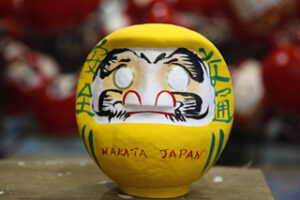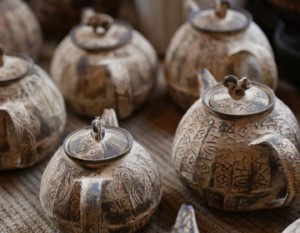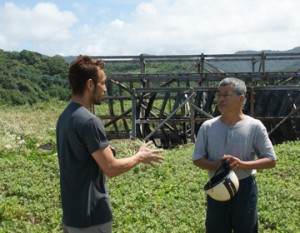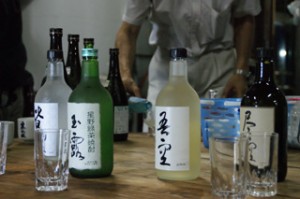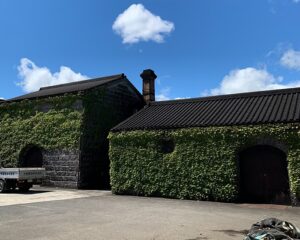Kutchan Town in Hokkaido is home to the Niseko area, which attracts many tourists in winter in search of high-quality powder snow. In summer, the underground springs flowing beneath Mount Yotei create a stunning landscape of potato flower fields stretching as far as the eye can see. In this potato-farming town, Honma Matsuzo Shouten’s premium potato “540” is gaining a reputation. We spoke with Honma Hiroki, the fourth-generation owner who works closely with the farmers.
The climate of Kutchan, where potatoes grow well in Hokkaido
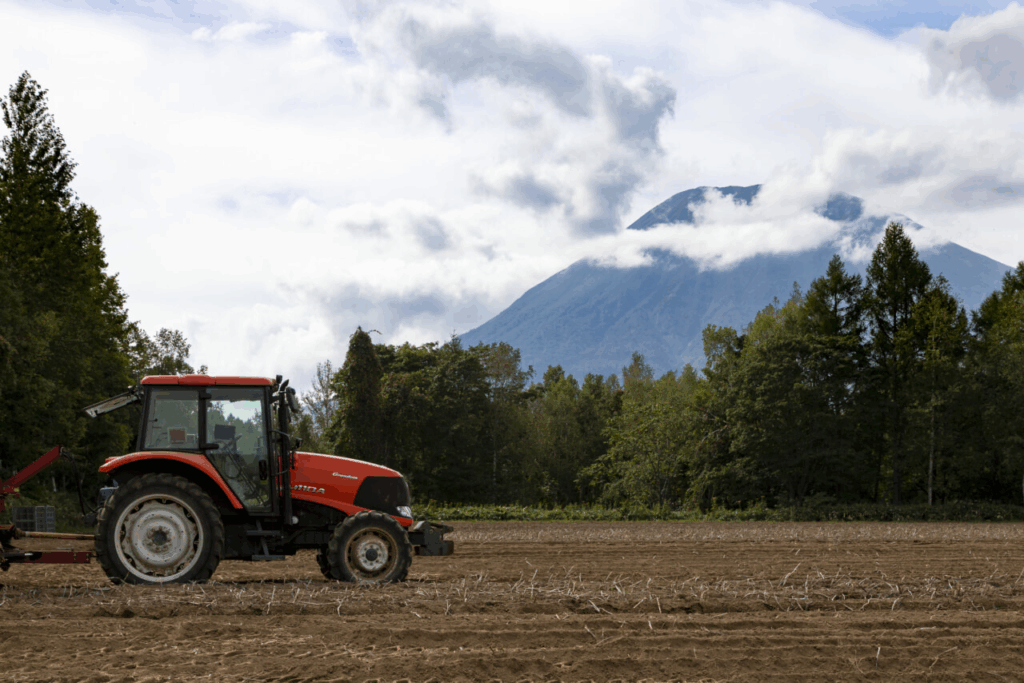
The town of Kutchan, located in Abuta District, Hokkaido, is surrounded by the Niseko Mountains, which are famous for the stratovolcano Yotei-zan, nicknamed “Ezo Fuji” for its beautiful conical shape, and the volcano Niseko Annupuri within the Otaru Coast National Park. Kutchan, with its inland climate characterized by large daily temperature fluctuations, is also one of Hokkaido’s heaviest snowfall areas. While spring and summer are characterized by mild, sunny weather, winter brings dry air from the northwest Japan Sea, which absorbs moisture and forms snow clouds.
Snow clouds formed on the Japan Sea side cross the Niseko mountain range and collide with Mount Yōtei, transforming into powder snow that drifts down onto Kuchan. This bountiful gift from the sky, rich in minerals, continues to fall, accumulating to a total of 8 to 9 meters annually. The snow melts into clear streams flowing from the foot of Mount Yotei, not only nourishing the land but also serving as insulation. Thanks to the accumulated snow, the soil remains unfrozen, and in spring, the minerals from the snow seep into the soil, further enriching the land. Indeed, Kutchan boasts an ideal environment for growing root vegetables and potatoes.
Kutchan’s potatoes, primarily for fresh consumption
“Potatoes are categorized into fresh and processed varieties, and nearly all of those grown in Kutchan are for fresh consumption. The main varieties are those you commonly hear about, such as Baron and Makein, which are widely available in supermarkets. As a production area, Kutchan is among the top in the country,” says Hiroki Honma, the fourth-generation owner of Honma Matsuzo Shouten, a vegetable wholesaler that has been in the town for over 100 years. “The cultivation area is approximately 1,200 hectares (about 256 Tokyo Domes), the largest in Hokkaido. Our ancestors went through many trials and errors to reach this point. I’ve heard that it was a very difficult process.”
Honma Matsuzo Shouten, walking alongside the community
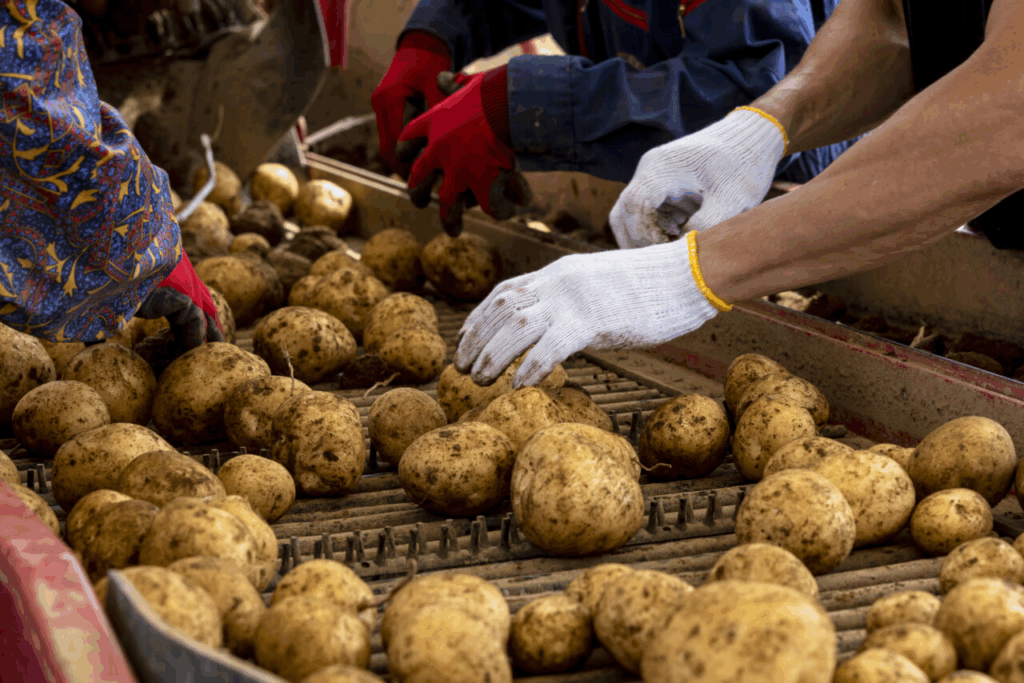
Potato cultivation in Kutchan began in 1892 (Meiji 25) during the pioneer era. One of the pioneers, Manabe Hamazaburo, started cultivating potatoes, and later, Yanagihara Torazo focused on selecting potatoes with better shapes. They conducted extensive research to preserve high-quality potato seeds for future generations. The first generation of Honma Matsuzo Shouten, Honma Matsuzo, moved from Niigata to Kutchan around the beginning of the Taisho era, when the reputation for “tasty potatoes” grew and shipments to Honshu began. Since then, rather than owning farmland, the company has purchased crops grown by local farmers and stored them in warehouses, serving as a “producer wholesaler” under government guidance, shipping to designated locations. Currently, the company sells harvested crops under the “Kutchan-produced” brand.
“During the early days of Hokkaido’s settlement, when securing one’s own food was a top priority, potatoes became an important crop because they could grow well even in the cold climate where rice could not thrive. This background of cultivating and consuming potatoes as a staple food is one of the reasons why so many potatoes are grown for consumption in Kutchan,” he explains.
Additionally, the Hakodate Main Line, which runs along the Sea of Japan coast from Sapporo to Hakodate, had a freight station, and there was a shipping route from Hakodate to Aomori via freight trains, which led to Kutchan, located at the foot of the Sapporo Mountains, becoming a hub for the distribution of heavy goods.
“As a result, Kutchan came to play a significant role as Japan’s kitchen, delivering potatoes to households across the country, including Tokyo,” says Honma. Nearly 80% of Japan’s potatoes are produced in Hokkaido, and Kutchan has become a major production area.
As a major potato-producing region, Kutchan and Hokkaido have been required to use large machinery to efficiently produce large quantities of agricultural products in order to fulfill their role as Japan’s food base, and they have responded to this demand as a production area.
“However, given the historical background in which large-scale agriculture similar to that in Europe and the United States has been promoted as a major production area, we believe that the era of simply producing large quantities is coming to an end. What is needed in this new era is to deliver high-quality potatoes that can only be enjoyed in this region to everyone.”
As a vegetable wholesaler, the company recognized that enhancing product value and brand development were key to supporting farmers and regional development.
The birth of “540,” a potato aged for an extended period in snow cellars.

The potatoes sold by Honma Matsuzo Shouten are certified as “specialty cultivated agricultural products” by a third-party organization, with strict limits on the use of fertilizers and pesticides, regardless of variety. They are marked with a distinctive red brand logo and are known as “Kutchan Potatoes.”
The ‘Baron’ variety features the distinctive aroma and fluffy texture of potatoes, while the ‘Touya’ variety is larger with a yellow flesh. The “Sayaka” variety has a refreshing and mild flavor, while the “Kitakamui” variety has a delicate texture and strong sweetness. The “Kitaakari” variety, also known as “Kuri Potato,” has a fluffy texture. These five varieties are sold under the “Kutchan Brand.”
Additionally, six years ago, the company began selling a premium potato called ‘540,’ which is made by aging Kutchan potatoes in a snow cellar for an extended period. Harvested potatoes are cooled using snow for 540 days (approximately one and a half years), stored in a warehouse with constant temperature and humidity, and left to rest. Through this prolonged aging process, some of the potato’s starch breaks down, and sugarization progresses, explains Mr. Honma.
“Potatoes stored under controlled temperature and humidity conditions begin to lose their mineral content after about two years, but not quite reaching three years. Potatoes naturally convert starch into sugar, which then becomes acidic, but through rigorous temperature control, they are preserved in a state where the sugar remains, maintaining their sweetness. They do not sprout or rot.”
Facing the reality of Japanese consumption
“The birth of ‘540’ was truly a series of coincidences,” says Mr. Honma. Born and raised in Kutchan, Mr. Honma actually worked in a Tokyo market until 14 years ago. ”Having a perspective close to producers, including my family, I gained insight into how the crops I had cultivated were consumed while working in the Tokyo market. In a way, it was a glimpse into the reality of consumption.”
The demand for Hokkaido-produced potatoes peaks from August to September during the harvest season and continues until around Golden Week in May. However, once May passes, Hokkaido-produced potatoes are no longer in demand. This is because potatoes from Nagasaki, the birthplace of potatoes in Japan, which were introduced along with firearms, enter the market as they reach their peak season.
Potatoes from Nagasaki and other regions like Chiba, where the season is in full swing, flood the market, creating a frenzy of demand. Honma understands that, given Japan’s north-south geography, it’s inevitable that the peak season varies by region. However, he has always questioned why seasonal produce, regardless of taste, takes precedence and dominates the market.
“I understand that seasonal vegetables are delicious. However, root vegetables in particular develop a different kind of flavor when they are allowed to rest. I felt a dilemma because this was not understood,” he explains.
Upon returning to his hometown, Mr. Honma asked his father, Hideo, who was the president at the time, if he could sell potatoes even during the summer. While there was already a technique for storing potatoes using snow, the snow would melt. So, he had a refrigerator suitable for storage built and stored only the necessary amount. New potatoes have thin skins, contain a lot of moisture, and are very soft. Due to these characteristics, many chefs find them difficult to handle. While he had experimented with selling them to chefs who did not prefer the characteristics of new potatoes, he had not considered commercializing them.
An indispensable ingredient in chefs’ potato recipes
One day, when Mr. Honma brought some potatoes stored in his warehouse to the long-established Japanese restaurant “Naniwa-tei” in Sapporo, the owner exclaimed, “What is this? I’ve never tasted potatoes like this before!” When he tasted them, the potatoes, which had been stored in the warehouse for about two years, were sweet like sweet potatoes and had a distinctly different flavor from conventional potatoes.
Honma had simply brought the potatoes, which had been stored in the corner of a refrigerator, out of curiosity. Captivated by the accidental sweetness that developed without any conscious effort to preserve them, the chef at Naniwa-tei recommended selling them. The name “540” comes from the fact that the potatoes undergo a maturation period of over 540 days from harvest.
Carefully aged to develop a unique sweetness unlike any other, “540” was first served at local hotels such as “Chalet Ivy Hirafu” and “Park Hyatt Niseko HANAZONO” in Niseko. It quickly gained popularity, with inquiries pouring in from restaurants across the Kanto region, including Tokyo, and as far south as Okinawa. However, due to the need for meticulous temperature control, it is only available through a referral system, and general sales are not available to customers without a connection to Kutchan.
We aim to increase the number of fans of Kutchan-produced products through these appealing processed goods.

The pioneers of the Meiji era who introduced potato farming to Kutchan. Additionally, the subsequent development of the Niseko area as a resort destination is another major factor contributing to the unique character of Kutchan’s potatoes, according to Mr. Honma.
Resort visitors who come to Niseko specifically to visit Mr. Honma and tell him, “It was delicious” and “Thank you,” are a source of inspiration. Even though the resort is the main purpose of their visit, the fact that there are many people who interact with each other through potatoes is a unique charm that other potato-producing areas do not have.
I would like people to see the fields where potatoes are actually grown, experience the environment of the production area, and feel the people who are involved in these potatoes. In the future, I am eager to create processed products that utilize the “540” brand. For example, if there are items that can be taken home as souvenirs or provide a tangible experience, they could serve as a tool to make the production area feel more accessible.
“Just as Kutchan is known as a resort destination, we hope that more people will visit as a production area associated with the ‘540’ brand,” he says with conviction.




